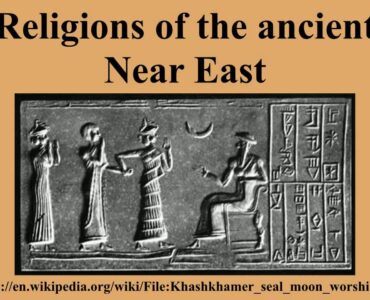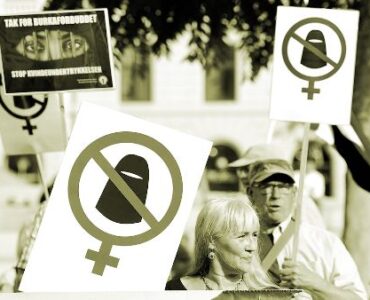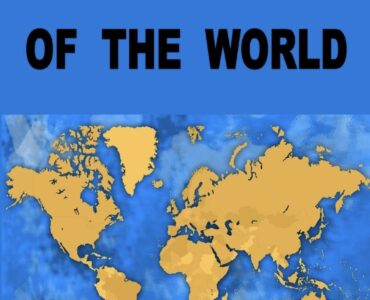
Islam In Africa To 1800
Merchants, Chiefs, And Saints
Islam moved into Africa from three directions. It came from North Africa across the Sahara to Bilad al-Sudan (The Lands of the Black People), which is between the Atlantic Ocean and Lake Chad. Despite six centuries of resistance from Nubian Christians, Islam expanded from Egypt southward, up the Nile valley, and west to Darfur and Wadai. Islam also moved from the Arabian peninsula across the Red Sea to the Horn of Africa, and from there further south to the coast of East Africa. This chapter will analyze the diverse patterns of the Islamization of Africa and the variety of religious experiences encountered by African Muslims until the beginning of the nineteenth century. During the eighteenth century, several factors contributed to the change from accommodation with local cultures to Islamic militancy, which brought about the jihad movements of the nineteenth century.
Ghana And Mali
The earliest Arab expeditions in North Africa in the seventh and eighth centuries penetrated the Sahara in two directions, from Tripoli toward Fezzan in southwestern Libya and from the Sus in southern Morocco. These Arab expeditions made their way on beaten routes along which trade had been carried for some time. Trade across the Sahara was carried by nomadic Berbersa, who occupied both ends of the Sahara. By the tenth century Muslim traders from North Africa had their base in the commercial centers of Awdaghust and Tadmekka in the southern Sahara. From these towns they traded with the capitals of the kingdoms of Bilad al-Sudan, Ghana and Gao (in eastern Mali). Each capital city was composed of a Muslim town and a royal town. This residential separation allowed each group to practice its own religious rites without offending the other.
Arab expeditions penetrated the Sahara Desert along trade routes from the north. Sijilmasa, located in an oasis in southern Morocco, was one of the great trans-Saharan entrepôts of the Middle Ages. Archaeologists are just beginning to penetrate the mounds that remain at the site.
Writing in 1068, the Andalusian geographer al-Bakri (d. 1054) was able to gather precious information about Islam in three contemporary African kingdoms: Gao, Ghana, and Takrur (in lower Senegal). The king of Gao was Muslim, but the common people adhered to their ancestral religion, and pre-Islamic customs persisted at the court. The partial acceptance of Islam in Gao is contrasted with the zealous adherence to Islam of the king of Takrur, who compelled his subjects to observe Islamic law and carried out a jihad against his neighbors. The Islamic militancy of Takrur was exceptional, whereas Gao’s symbiotic relationship between Islam and the traditional religion was more typical of Islam in West Africa.
In Ghana, Muslims lived under the auspices of a non-Muslim king, who invited Muslim traders to the capital and employed literate Muslims in his court. According to the geographer Abu Abdallah Muhammad ibn Abi Bakr al-Zuhri (fl.1137–54) writing in 1137, the people of Ghana converted to Islam in 1076. This must have happened under the influence of the Almoravids, a militant Islamic movement in the southwestern Sahara. According to the geographer al-Sharif al-Idrisi (1100–65), Ghana was a Muslim state in 1154 and was still among the most powerful in western Sudan. By the middle of the thirteenth century, however, Ghana’s power had declined and the political center of gravity shifted southward, where Mali, on the upper reaches of the Niger River, emerged as the dominant power. Al-Bakri’s writings imply that there were also local Muslims in Ghana, traders who were part of a commercial network that extended from the towns of the Sahel to the sources of gold in the south. Muslims established trading centers that by the end of the fifteenth century reached the fringes of the forest. They created a commercial diaspora with a common religion, language, and legal system, the Shariah, a personal and extraterritorial divinely ordained law, which added to the mutual trust among merchants. Conversion to Islam thus became necessary for those who wished to join the commercial network.
The next phase in the process of Islamization began when Muslim religious leaders established communication with host kings. Al-Bakri presents an account of such an encounter that brought about the Islamization of the king of Malal, a small principality that two centuries later developed into the empire of Mali. The Muslim religious leader, according to this account, succeeded in winning over the king by demonstrating Allah’s omnipotence. In this instance, praying to Allah saved the kingdom, whereas the sacrifices performed by local priests had failed. Al-Bakri’s accounts, like other traditions, emphasize the role of the rulers as early recipients of Islamic influence and therefore the importance of kingdoms in the process of Islamization. Indeed, Islam did not penetrate into segmentary societies even when and where Muslim traders and religious leaders were present, because there were no rulers to mediate Islamic influence.
In the principality of Malal, as in Gao, only the king, his family, and his entourage accepted Islam. In this respect, Islam could have become a divisive factor between the Islamized kings and the non-Muslim commoners. Situated between their subjects and an influential Muslim minority, kings adopted a middle position between Islam and the local traditional religion. Kings behaved as Muslims in some situations but followed traditional customs on other occasions. They patronized Muslim religious experts but also referred to traditional priests. From this middle position, dynasties and individual kings could develop greater commitment to Islam or fall back on ancestral religion.
The Malinke (literally, “the people of Mali”) were the Mande-speaking people associated with the empire of Mali. Malinke chiefs had come under Islamic influence before the time of Sundiata, the founder and ruler of Mali. Sundiata, a great hunter and magician, led his people in a war of liberation against another powerful magician, Sumanguru, the king of Soso, in the Battle of Kirina. Though a nominal Muslim, Sundiata turned to the traditional religion for support. Two centuries later, Sonni Ali, who made the small kingdom of Songhay into a large empire, behaved in a similar way. Kings such as Sundiata and Sonni Ali, founders of empires, are the heroes of the national traditions, whereas the exploits of their Muslim successors—Mansa Musa of Mali and Askiya Muhammad of Songhay—were recorded only by the Arabic sources. From its center on the upper Niger River, Mali expanded into the Sahel in the direction of the Sahara. Muslim towns became part of the empire, and Muslim traders traveled over routes that traversed the empire. Through the control of the Saharan trade and the pilgrimage to Mecca, Mali came closer to the larger Muslim world. As the small Malinke kingdom evolved into a vast multiethnic empire, with influential Muslim elements inside and extensive Islamic relations outside the empire, its kings moved along an imaginary continuum, from attachment to the traditional heritage toward greater commitment to Islam. The emperor Mansa Musa (1312–37) made his empire part of the land of Islam. He built mosques with minarets, instituted public prayer, and attracted Maliki scholars. Mansa Musa visited Cairo on his way to Mecca in 1324, where he was described by an Egyptian official as a pious man, who “strictly observed the prayer, the recitation of the Quran, and the mention of Allah’s name.” The same informant told Mansa Musa that his treatment of free women as if they were slave concubines was forbidden by Islamic law. “Not even to kings?” Mansa Musa asked. “Not even to kings,” replied the official, “Ask the learned scholars.” Mansa Musa responded, “By Allah. I did not know that. Now I will renounce it completely.” Shortcomings in the application of Muslim law were most apparent in marriage customs and sexual behavior.
In 1352-53, during the reign of Mansa Sulayman, Mansa Musa’s brother, the great traveler and author Ibn Battutah (1304–68) visited the king’s court. He was impressed by the way Muslims in Mali observed public prayer on Fridays and by their concern for the study of the Quran. He described the celebration of the two great Islamic festivals: the “sacrificial feast” on the tenth day of the month of the pilgrimage and the festival of the “breaking of the fast” at the end of Ramadan. The presence of the king made public prayer an official occasion to which non-Muslims were also drawn. In return, the prestige of the new religion was mobilized to exhort loyalty to the ruler. The alliance between kingship and Islam made Islam into an imperial cult. As national feasts the Islamic festivals accommodated such traditional ceremonies as the recitation of songs praising the king and the appearance of masks. Ibn Battutah crtiticized these and other pre-Islamic customs. Ibn Battutah was also critical of the practice of sprinkling dust and ashes on the head as a sign of respect before the king. In eleventh-century Ghana, under a non-Muslim king, only those who followed the king’s religion knelt down and sprinkled themselves with dust; Muslims were exempted from this practice and they greeted the king by clapping hands. In the Islamized empire of Mali all subjects, Muslims and non-Muslims, had to follow the custom. In other words, under a non-Muslim ruler Muslims were not obliged to perform some traditional ceremonial acts, but under Islamized kings, who themselves combined Islamic and traditional elements, pre-Islamic customs had to be accommodated.
In much of West Africa a vernacular style of architecture is used for mosques and other large Muslim buildings. They are generally constructed of mud-brick, with wooden posts used to hold scaffolding when the surface needs repair, as at the mosque in Telli in the Dogon area of Mali.
In the fifteenth century Mali lost its control over the Sahel and was cut off from direct contact with the trans-Saharan routes and the larger Muslim world. The capital declined and was eventually deserted by the foreign Muslim community. As more ethnic groups escaped Mali’s domination, the kingdom gradually contracted back to its Malinke nucleus, and the traditional particularistic spirit of the Malinke nation triumphed over the universal supratribal appeal of Islam. Muslim religious leaders, remained attached to the courts of the successor states of Mali and continued to render religious services to those Islamized chiefs, but they lost the Islamic zeal encouraged by the fourteenth-century kings of Mali. The chiefs returned to the middle position between Islam and the traditional religion, with a greater inclination toward the latter. Muslims in the capital and in provincial centers of government became integrated into the state’s social and political systems. They were pious and observant believers themselves, but they often had to tolerate the more diluted forms of Islam as practiced by their kings and to take part in ceremonies in which pre-Islamic rites were performed. The situation of these Muslims was different from that of Muslims in commercial towns, which were often autonomous. For example, the king of Mali did not enter Diaba, a town of the fuqaha (those who are experts on Islamic jurisprudence), where the qadi (a judge administering religious law) was the sole authority. Anyone who entered Diaba was safe from the king’s oppression and outrage; it was thus called “the town of Allah.”
Merchants were carriers of Islam rather than agents of Islamization. They opened routes and exposed isolated societies to external influences, but they were not themselves engaged in the propagation of Islam, which was the work of religious leaders. The leaders became integrated into African societies by playing religious, social, and political roles similar to those of traditional priests. Like traditional priests, Muslim men of religion were peacemakers, who pleaded for those who broke the king’s laws. Mosques, like traditional shrines, were considered sanctuaries. Immunity of life and property was extended to men of religion only as long as they kept out of politics and posed no threat to the existing sociopolitical order.
Islam In Africa To 1800
803 – 02
https://discerning-Islam.org
Last Updated: 04/2022
See COPYRIGHT information below.



